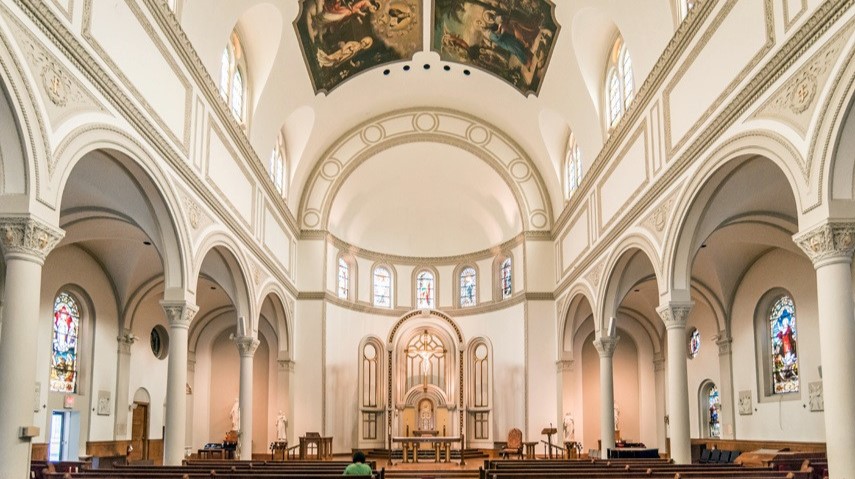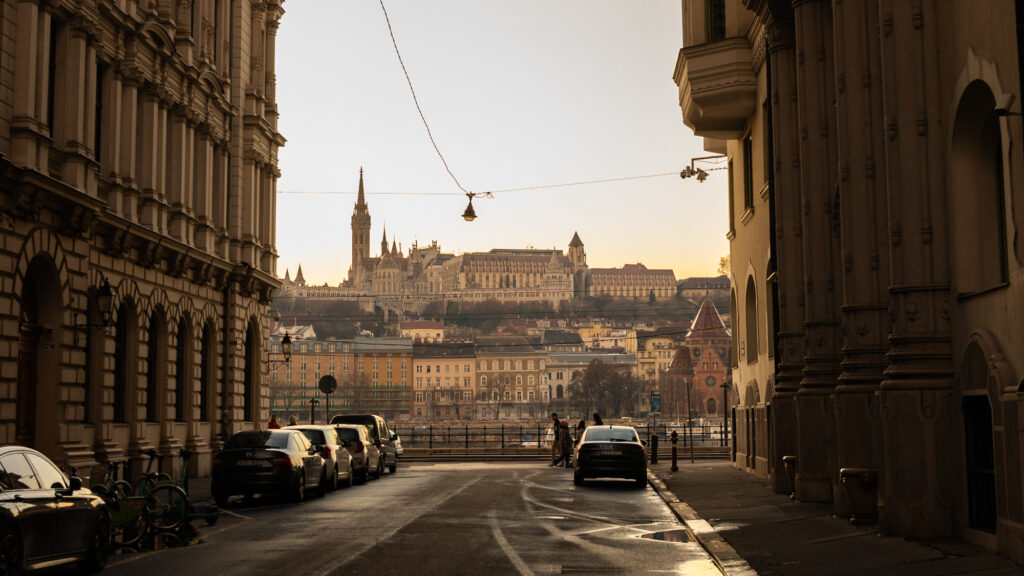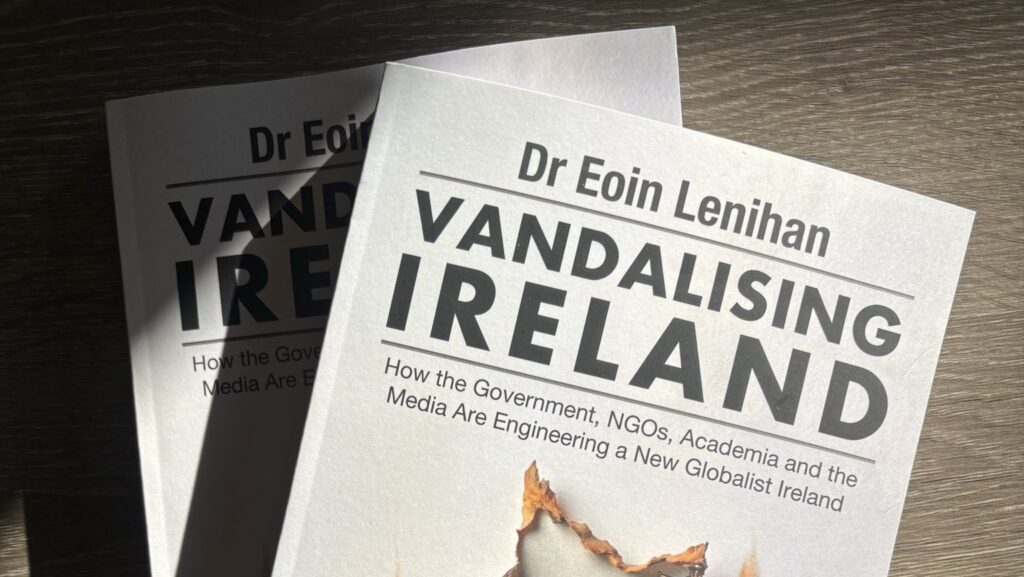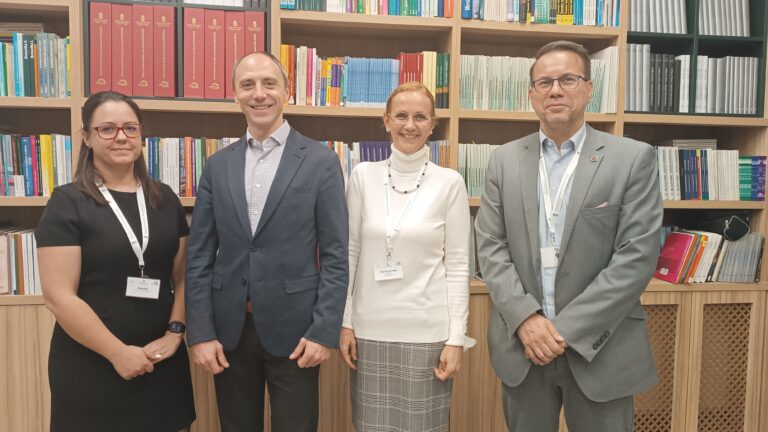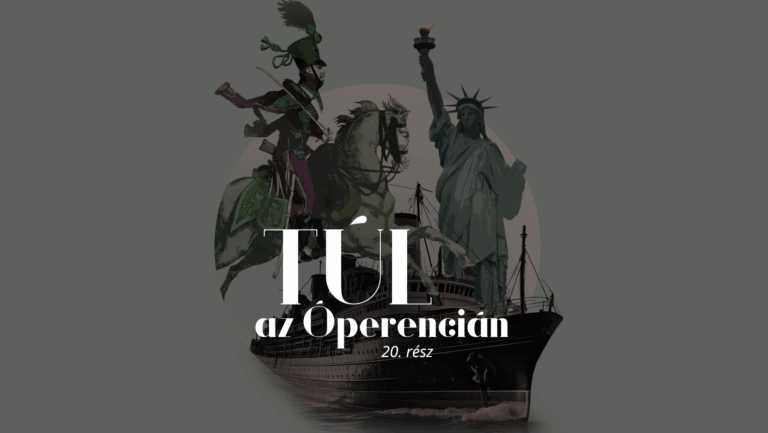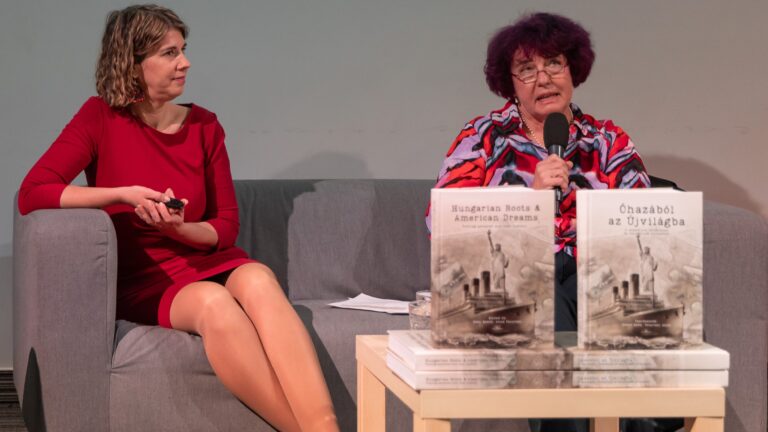This is an abridged version of the original article, published online in Magyar Kurír on 1 December 2022.
On 19 November 2022, the Hungarian Catholic community of St. Stephen’s in New York celebrated its 120th anniversary on the feast day of St. Elizabeth. Following a festive Mass officiated by Iván Csete, the only Hungarian Catholic priest in New York State, and László Balogh, Hungarian Catholic priest from Passaic, New Jersey, a classical music program was held, followed by a family afternoon in the basement hall of St. Joseph’s Church, which has hosted the community for the past few years. After the event, I spoke with Róbert Winer, chairman of the Lay Council of the Hungarian Catholic community, about the past, present, and expected future of the community.
***
About 120–130 people attended the festive Mass, which, compared to the estimated 50,000 people of Hungarian descent in New York, is discouraging—even considering the turbulent history of this Hungarian Catholic community, whose fate seemed to be sealed with the closure of their church in 2015. However, the event’s organizer, Róbert Winer, chairman of the Lay Council, assured me otherwise: they are not giving up hope, remain optimistic, and will continue to fight to have their Hungarian church once again or to reclaim the former building. They also long for their own Hungarian priest, as Father Iván Csete and Father Laci Balogh, who co-celebrated the Mass, currently take turns every other week commuting to New York from their respective churches and parishes.
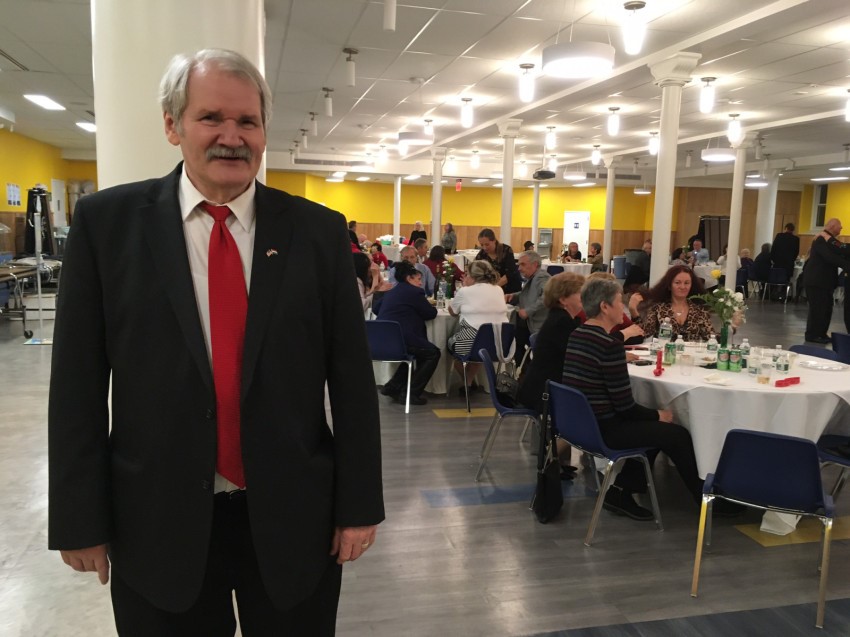
A 120-Year History
Before delving into the analysis of the current situation, it’s worth familiarizing ourselves with the key milestones of Hungarian presence in New York, particularly that of St Stephen’s Catholic community, which Fr. Iván Csete and Róbert Winer were happy to summarize for me.
Mass Hungarian immigration to America began in the second half of the 19th century, with New York being the first stop for new immigrants. Many moved on, while others settled here. Amid the daily struggles of building up a new existence, immigrants sought out Hungarian communities, and where none existed, they organized them—most often around churches. As these congregations grew, the need for their own places of worship emerged. This was the case with New York’s Hungarians as well, leading to the establishment of two Reformed, one Roman Catholic, one Greek Catholic, and one Baptist churches, all within a few streets of each other in what was then the ‘Hungarian neighborhood’ in the Yorkville section of the Upper East Side of Manhattan. Today, these churches still exist, except for St. Stephen’s Roman Catholic church, which was closed in 2015, together with several other Catholic churches across the U.S.

As for this church in particular, the first Hungarian Catholic mass in New York was held at St. Elizabeth’s Church on 7 August 1892, while St. Stephen’s Catholic Parish was officially registered on 2 August 1902. On 20 August 1927, the foundation stone for the new church and school was blessed and laid at East 82nd Street. The new Hungarian church and school were founded by the generation of the so-called ‘old Americans’ who had immigrated at the beginning of the 20th century, while the Hungarian Catholic community was further strengthened by political refugees from World War II and the 1956 Hungarian revolution and freedom fight. The first procession with the relic of St. Stephen took place on 18 August 1968.
The final Sunday mass in this church was held on 30 August 2015. That year, an archdiocesan decree merged the Hungarian parish with the neighboring Slovak Saint Elizabeth Parish under the German Saint Monica Church, dissolving the independent operation of both the Hungarian and the Slovak churches. The closure of the Hungarian church was so unexpected that the community was unable to rescue any movable items from the building except for a St. Stephen’s statue. Originally placed at the entrance of the Pázmáneum in Vienna, the statue had been damaged by Soviet soldiers occupying Vienna at the end of World War II, later restored by the Knights of Malta, and gifted to the church on 17 August 1975. Today, with broken crosses, it remains in a side room of St. Joseph’s Church, alongside a statue of St. Elizabeth.
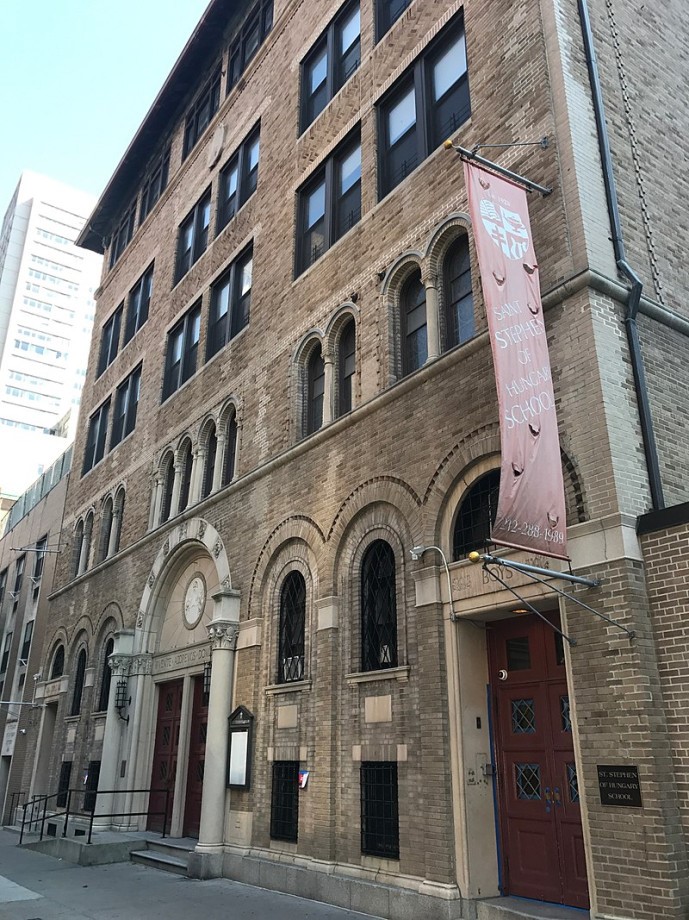
After the closure, this Hungarian Catholic community was initially allowed to hold Sunday masses at St. Monica’s Church. However, due to the unfriendly attitude of their resident priest, most of the Hungarians eventually moved to the nearby St. Joseph’s Church, where Father Ramsey Boniface welcomed them. St. Stephen’s Hungarian church was turned into an American Catholic school, and Hungarian churchgoers are no longer allowed inside the building. In 2018, the St. Stephen’s Day celebration on 20 August was held by requesting police permission to gather, sing, and pray in front of the closed church.
‘During half a century of atheist oppression in Hungary, Hungarian churches in the free world became the last bastions of Hungarian Christianity’
Fr. Iván Csete summarized the situation poignantly: ‘During half a century of atheist oppression in Hungary, Hungarian churches in the free world became the last bastions of Hungarian Christianity. With the fall of Communism and the restoration of religious freedom, these church communities maintained their role of preserving and nurturing the Christian culture and traditions of Hungarians living outside Hungary. After the unfortunate closure, the large German church in Yorkville became the spiritual home of Hungarian Catholics in New York. May the Almighty grant that many beautiful, noble, and blessed things happen in the future in this house of God.’
The Present: Alone, One Is Lost
Róbert Winer, a native of Nagyvárad (Oradea, Romania), has lived in New York for 40 years. He explained that in America, churches were always built with large community halls, usually including a kitchen. This ensured that communities had everything they needed to function and grow. He quoted Liviu Rebreanu, a Romanian writer from Transylvania (Romania) who initially wrote in Hungarian, to express the importance of his opinion: ‘Only an organized community becomes a creative force, my dear friend! A person alone is lost, whereas in a community, every effort finds its place, and together, they contribute to the elevation of each individual. The collective efforts of all communities bring humanity closer to God.’
For over a century, New York’s Hungarian Catholics formed and grew into a large community. Their faith united Hungarian immigrants, shaping a social group that embraced churchgoers in New York and its surroundings—regardless of denomination, and later, even ethnicity or nationality. Many individuals found spiritual peace here; they built relationships, met their spouses, and received the sacraments. For some, their entire lives were tied to this church and community. Some even expressed their desire to be buried there—something that has no longer been possible since 2015.
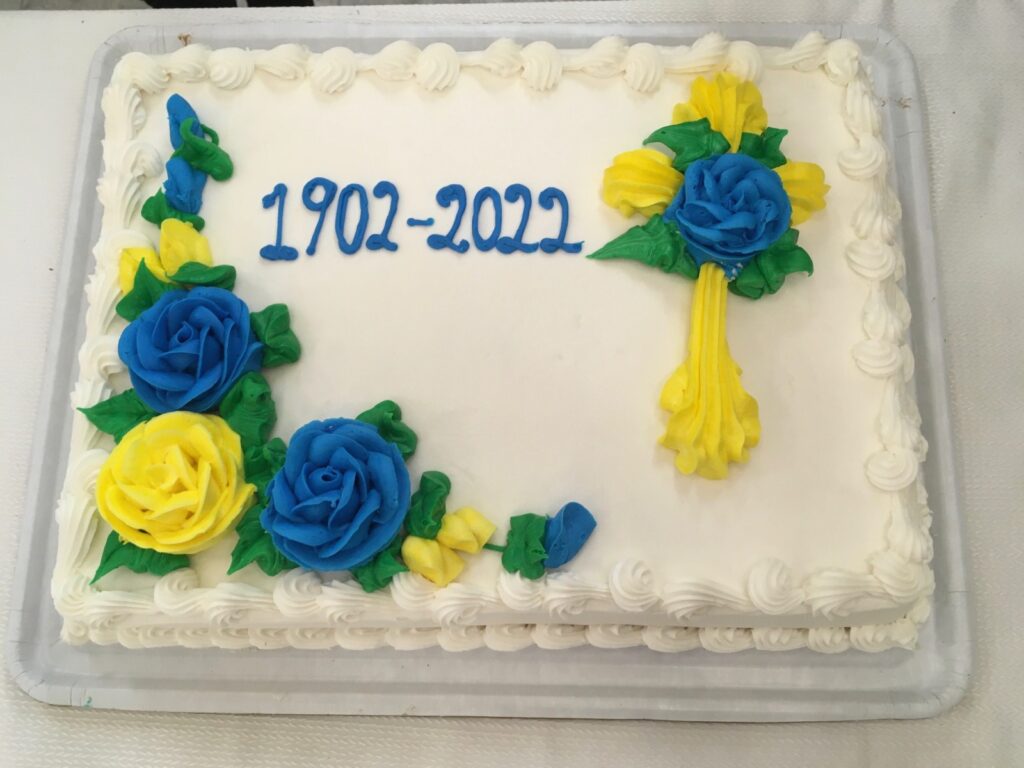
Building a community under these circumstances is difficult, Winer admitted. He noted that around 30 people attend mass on Sundays; some typically attend non-Hungarian churches closer to their homes, and others work even on Sundays. He stressed that explaining the importance of community to young people is crucial. Many question what the church offers them and why it is important for their children to know Petőfi (one of the most famous Hungarian poets), as they will still be able to work without this knowledge. Winer explained: ‘Many Americans think the same way: it doesn’t matter what someone does, says, or believes—what ultimately matters is whether I can put bread on the table at night. If I can’t, no one else will—not my neighbor, not the state. It’s a highly practical yet individualistic mindset.’
‘Explaining the importance of community to young people is crucial’
Regarding the church closure, Winer believes many still don’t fully understand either what happened or comprehend its consequences. He bitterly remarks that the Hungarian Catholics’ opinions and intentions weren’t considered within their own archdiocese. ‘Everything that Hungarians accumulated over 100 years was lost—only two statues were saved. There are no Hungarian Catholics in New York anymore, or even in America—just Catholics who happen to be Hungarian, and that’s a huge difference…’ In his view, the Hungarian mass alone isn’t enough; a church means much more: catechism, visiting the sick, pastoral care, active relationships with other organizations, and a vibrant community—in other words, a functioning system that the priest and the congregation uphold together.
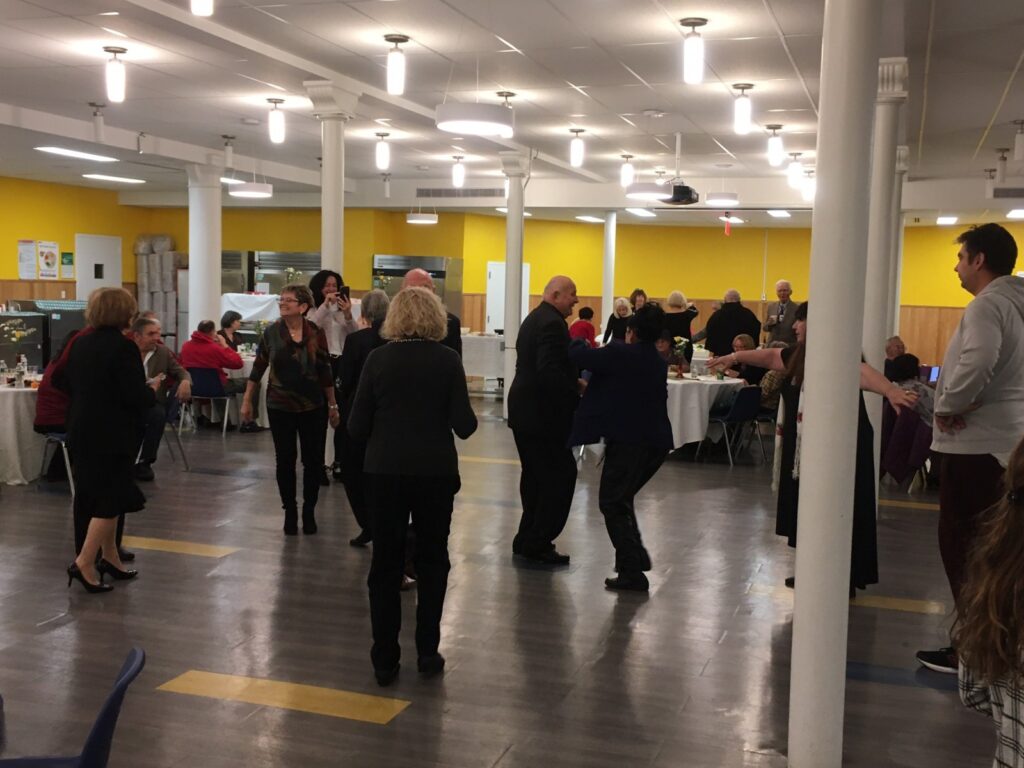
There are still several Hungarian community institutions—Hungarian scout troops, a Hungarian weekend school, and a Hungarian House in New York—the members of which should also come to church, and the priest should be visiting them, not just personally, but representing the Church, radiating faith. Unfortunately, after the closure, both the scouts and the Hungarian school became completely detached from the church; neither the scout leaders nor the school teachers attend church regularly, so there is no personal example for the children. The former Consul General, Ferenc Kumin, used to come regularly with his family, and his children even served as altar boys here. ‘Many people don’t even want to acknowledge that the smaller we become, the greater the danger we face. For years, we rented this hall on Saturdays between 3pm and 4pm after mass, but if we don’t rent it for some time, we may not be able to do it the following year, because someone else might take it. When the church was closed, there was no one to properly represent us: we no longer had our own Hungarian priest, and the head of the Lay Committee didn’t fight hard enough for us. What I learned in Transylvania is that you have to learn how to make yourself liked—not in the sense of flattery, but through diplomacy and cooperation. Nowadays, you don’t hear things like that; it’s not a good slogan for young people today, as individual interests now override community concerns. Another thing that many—both young and old—keep emphasizing nowadays is the truth. But what matters is not who is right, but what one actually brings to the table. This practicality I learned from Americans. If you don’t understand the other person, go in another direction, but don’t take offense. However, Hungarians are constantly offended. Moreover, among Hungarians, place of origin also plays a significant role—it determines how they think about community,’ concluded the chairman.
Read more Diaspora interviews:

